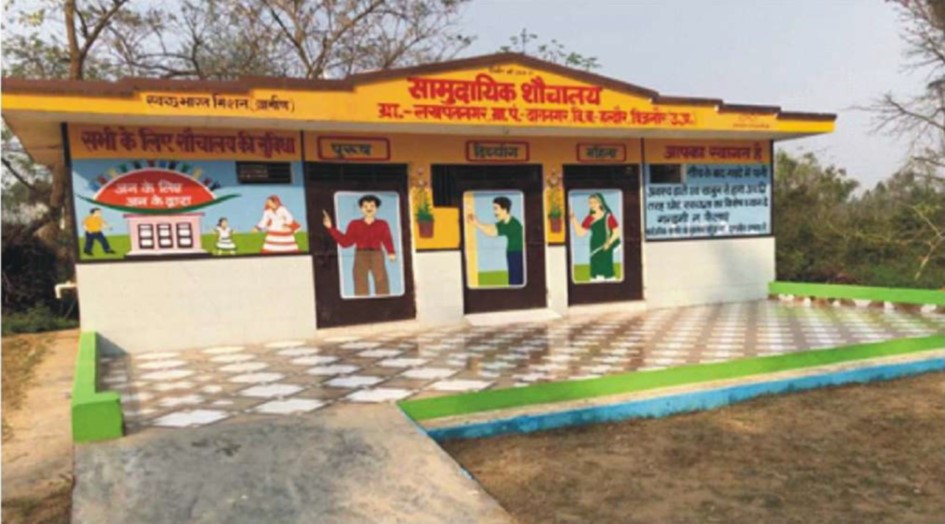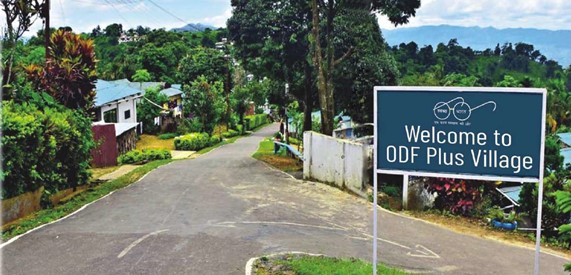About Swachh Bharat Mission
The evolution of sanitation in India is a rich tapestry woven with ancient wisdom and modern initiatives. From the Sindhu Valley civilization's innovative toilet construction to contemporary nationwide movements, the journey reflects a commitment to improving public health and hygiene.
Despite historical innovations, India grappled with sanitation challenges, particularly in rural areas, affecting millions. In 2014, only 39% sanitation coverage was achieved, impacting vulnerable demographics, notably women and children. Recognizing the urgency, various initiatives were launched to address this pressing issue.
Swachh Bharat Mission -Grameen (SBM): Phase I (2014-2019)
Responding to the imperative for comprehensive sanitation coverage, the Swachh Bharat Mission was launched on October 2, 2014, by the Hon’ble Prime Minister, with a focus on making India Open Defecation Free (ODF). This monumental endeavor mobilized millions, resulting in it becoming the largest mass movement and behavioral change programme in the world that led to the construction of over 100 million individual household toilets within five years, achieving 100% sanitation coverage by 2019.
The declaration of over 6 lakh villages as ODF by October 2019 marked a significant milestone, paying homage to Mahatma Gandhi on his 150th birth anniversary. Additionally, this achievement aligned with the SDG Target 6.2, effectively ending open defecation nationwide.

Impact of SBM Phase I
- SBM saves lives: WHO 2018 - 3 lakh diarrheal deaths avoided in 2019 compared to 2014
- SBM improves nutrition and productivity: BMGF 2017 - 58% higher cases of wasting among children in non-ODF areas
- Swachhata secures safety and dignity of women: UNICEF 2017 – 93% women feel safer after getting a toilet at home
- SBM saves money for the family: UNICEF 2017 - INR 50,000 saved every year on average by a household in an ODF village due to health costs avoided.
- SBM saves the environment: UNICEF 2019 - 12.70 times less likelihood of groundwater contamination traceable to humans in ODF villages
- Sanitation as everyone’s business: Other departments earmarked over INR 50,000 crores for sanitation in their respective sectors, e.g.: highways, petrol pumps, railways, schools, hospitals, etc.
- Swachh Iconic Places (SIP) - Cleaning of iconic places; corporate and private support leveraged for each site.
Swachh Bharat Mission -Grameen (SBM): Phase II (2020-21-2025-26)
Having achieved the ODF status, SBM-G Phase II was launched with the objective of achieving Sampoorn Swachhata, i.e., sustaining the ODF status and managing solid and liquid waste by 2024-25 and transforming all the villages from ODF to ODF Plus Model.
“ Over the past 10 years, we have achieved a lot in terms of cleanliness. However, in this rapidly changing time, it is important for us to understand the challenges related to cleanliness. As our economy grows and urbanization increases, the generation of waste will also rise, leading to more garbage. We must improve our future strategies and develop technologies in construction that make greater use of recyclable materials. We need to design colonies, housing complexes, and buildings that brings us as close to zero waste as possible. With clean technology - better jobs and opportunities are emerging for our youth. Today, around 5,000 startups are registered in clean tech. In areas such as waste-to-wealth, waste collection and transportation, water reuse, and recycling, many opportunities are being created in the water and sanitation sector. ”
10th anniversary of Swachh Bharat Mission, 2nd October 2024, Vigyan Bhawan Prime Minister, Shri Narendra Modi
The key objective of SBM-G Phase II to:
- Sustain the ODF status of villages
Improve the level of cleanliness in rural areas through solid and liquid waste management activities, making villages ODF Plus. This includes
- ODF Sustainability
- Solid Waste Management
- Liquid Waste Management
- Visual Cleanliness
The total estimated outlay of SBM(G) Phase-II is Rs.1.40 lakh crores which is to be dovetailed through convergence between different verticals of financing and various schemes of Government of India and State Governments.
The ODF Plus progress is being captured on SBM(G) MIS in following categories:
- Aspiring: The village which is sustaining its ODF status and has arrangements for Solid Waste Management or Liquid Waste Management.
- Rising: The village, which is sustaining its ODF status, and has arrangements for both Solid Waste Management and Liquid Waste Management.
- Model: The village which is sustaining its ODF status; has arrangements for both Solid Waste Management and Liquid Waste Management; observes visual cleanliness i.e. minimal litter, minimal stagnant wastewater and no plastic waste dump in public places and displays ODF Plus IEC messages

Swachhata Green Leaf Rating:
Department of Drinking Water & Sanitation (DDWS), in collaboration with the Ministry of Tourism introduced the Swachhata Green Leaf Rating (SGLR) initiative. This visionary program marks a crucial step towards cleaner and more sustainable tourism practices. SGLR is not just a recognition but a commitment to shaping the future of our tourism industry as it aligns with the Travel for LiFE (TFL) program under Mission LiFE, fostering awareness about sustainable tourism. By nudging both tourists and businesses to adopt practices harmonious with nature, the SGLR program aims to develop an economically viable, responsible, and resilient tourism industry.
Swachhata Hi Seva (SHS) campaign:
As a prelude to Swachh Bharat Diwas 2024, the Annual Swachhata Hi Seva (SHS) in 2024 was implemented from 14th September to 1st October with culmination on 2nd October marking Swachh Bharat Diwas on Gandhi Jayanti. This campaign was joint implementation of Swachh Bharat Mission Grameen, Department of Drinking Water & Sanitation (DDWS) and Swachh Bharat Mission Urban, Ministry of Housing and Urban Affair (MoHUA). The tagline of SHS 2024 was ‘Swabhav Swachhata, Sanskaar Swachhata’ (स्वभाव स्वच्छता, संस्कार स्वच्छता ). The SHS 2024, theme ‘Swabhav Swachhata, Sanskar Swachhata,’ aimed to reignite the spirit of collective action and citizen participation for cleanliness across India, focusing on three key pillars under the ‘whole of society approach’:
- Cleanliness Target Units (CTUs)– Shramdaan activities aimed at the time-bound transformation of target units and general cleanliness.
- Swachhata Mein Jan Bhagidari –Promoting public participation, awareness, and advocacy.
- Safai Mitra Suraksha Shivirs –Conducting preventive health checkups and providing social security coverage for sanitation workers.
Through the course of SHS 2024, the campaign witnessed participation from the Honorable President and Vice President along with 42 Union Ministers, 10 Governors, 20 Chief Ministers, 149 MP’s, 188 State Ministers and over 933 MLA/MLC’s. There were over 30.63 lakh planned events that witnessed participation from over 30.91 crore people.
Light House Initiative :
DDWS launched the Light House Initiative (LHI) in collaboration with India Sanitation Coalition (ISC) and corporate partners in July 2022. Lighthouses as the name suggests are beacons of light that provide guidance for safe passage to sailors, symbolizing hope and security. Keeping the same ethos, the objective of this initiative was to develop 75 model ODF Plus blocks that cover all components of ODF Plus and serve as a learning lab, providing guidance and inspiration to other villages to enable them to achieve ODF Plus status at speed and scale. Report of LHI Phase 1 has been released and LHI Phase 2 work has been initiated.
Syama Prasad Mookerjee National Institute of Water and Sanitation(SPM-NIWAS):
DDWS setup the apex institute on Water and Sanitation, SPM-NIWAS Kolkata in 2022. The Institute is envisioned as a premier institute to develop capacities in states/UTs in the field of public health engineering, drinking water, sanitation, and hygiene through training programs. Such capacities are envisaged not only for the front-line workforce engaged in the implementation of the Swachh Bharat Mission and Jal Jeevan Mission but also for representatives of local bodies, both rural and urban. The institute offers short, medium & long-term courses which are not just related to engineering but also cover aspects of management, health, accounting, law and public policies
Always Learning, Always Updated
- DDWS, as a premier institute, prioritizes continuous learning and development. To support this, it regularly updates its compendiums and manuals, which are available in the resources section of its website.









